The world’s longest-serving death row prisoner has been acquitted after a long 56 years. Iwao Hakamanda was convicted of the 1966 murder of …
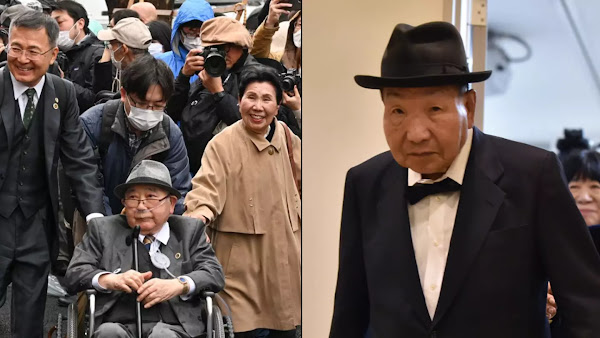 The world’s longest-serving death row prisoner has been acquitted after a long 56 years. Iwao Hakamanda was convicted of the 1966 murder of his boss, the man’s wife and their two teenage kids.
The world’s longest-serving death row prisoner has been acquitted after a long 56 years. Iwao Hakamanda was convicted of the 1966 murder of his boss, the man’s wife and their two teenage kids.
The former professional boxer had been working at a miso processing plant when the bodies of the family were recovered from a fire at their home west of Tokyo, Japan. All four of them had been stabbed to death.
Initially denying the accusations, he was sentenced to death after making what he later claimed was a coerced confession.
Hakamanda spent a whopping 48 years behind bars and most of them were on death row – earning him this unwanted title of the world’s longest-serving death row inmate.
It took a whole 27 years for the top court to deny his first appeal for retrial, with his second filed in 2008 by his sister, Hideko Hakamada, now 91.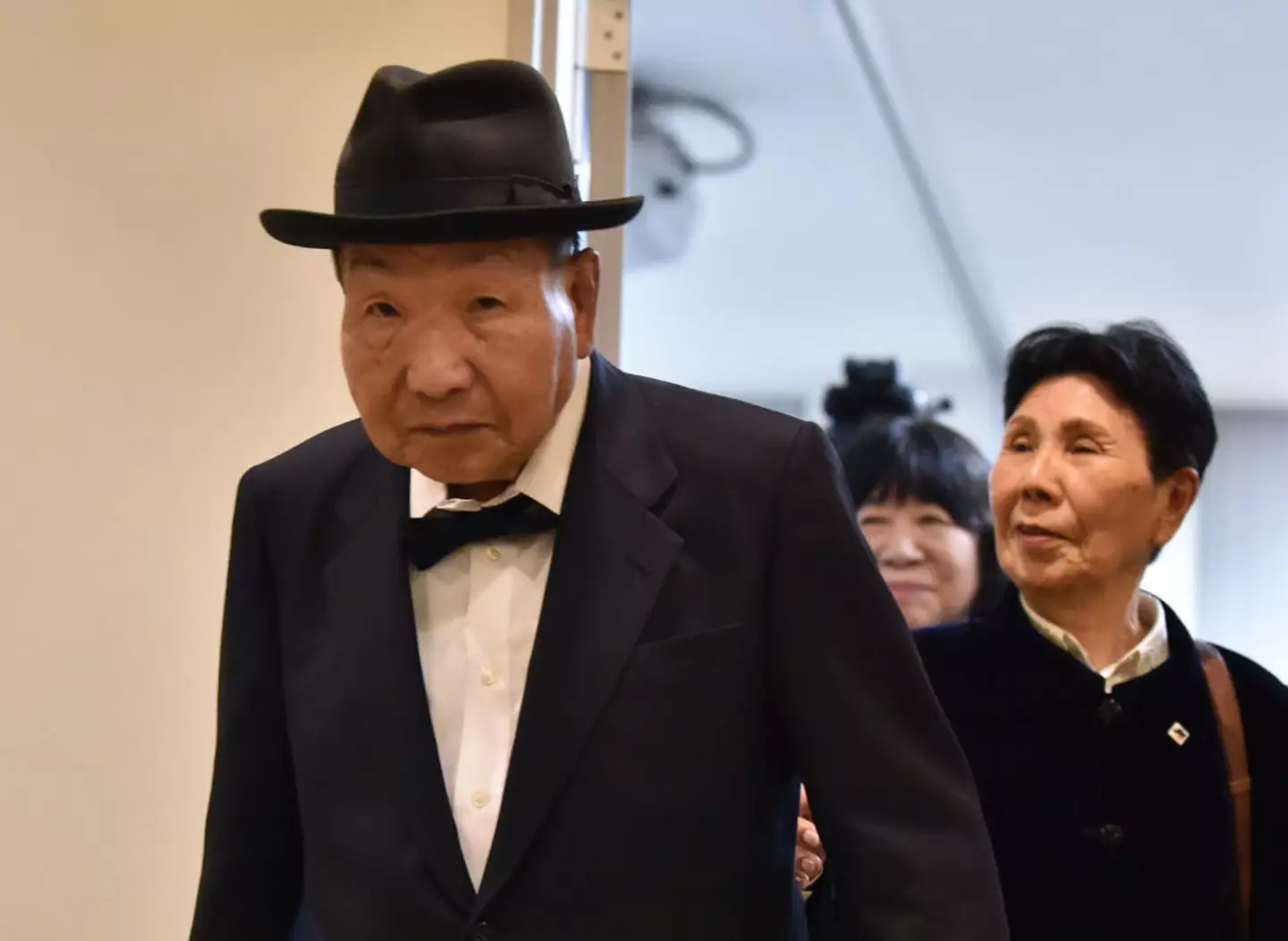
The court finally ruled in the man’s favour in 2023, paving the way for this latest retrial which began in October.
A major point of the discussion had been blood-stained clothing which investigators claimed Hakamada wore during the crime and hid in a tank of fermented soybean paste. These were found more than a year after his arrest.
But, defence lawyers and earlier retrial decisions said the blood samples did not match Hakamada’s DNA. Meanwhile, trousers prosecutors submitted as evidence were said to be too small for the accused and didn’t fit when he tried them on.
Hakamanda actually hasn’t been technically behind bars since 2014, when a court ordered a retrial as new evidence suggested his conviction may have been based on fabricated accusations by investigators. However, he was not acquitted.
He was able to serve his sentence at home as it was decided his older age and frail health made him a low risk for escape.
Before today’s decision, prosecutors at the final hearing in May again demanded the death penalty. And this led to rights groups and legal experts calling for the system to be revised.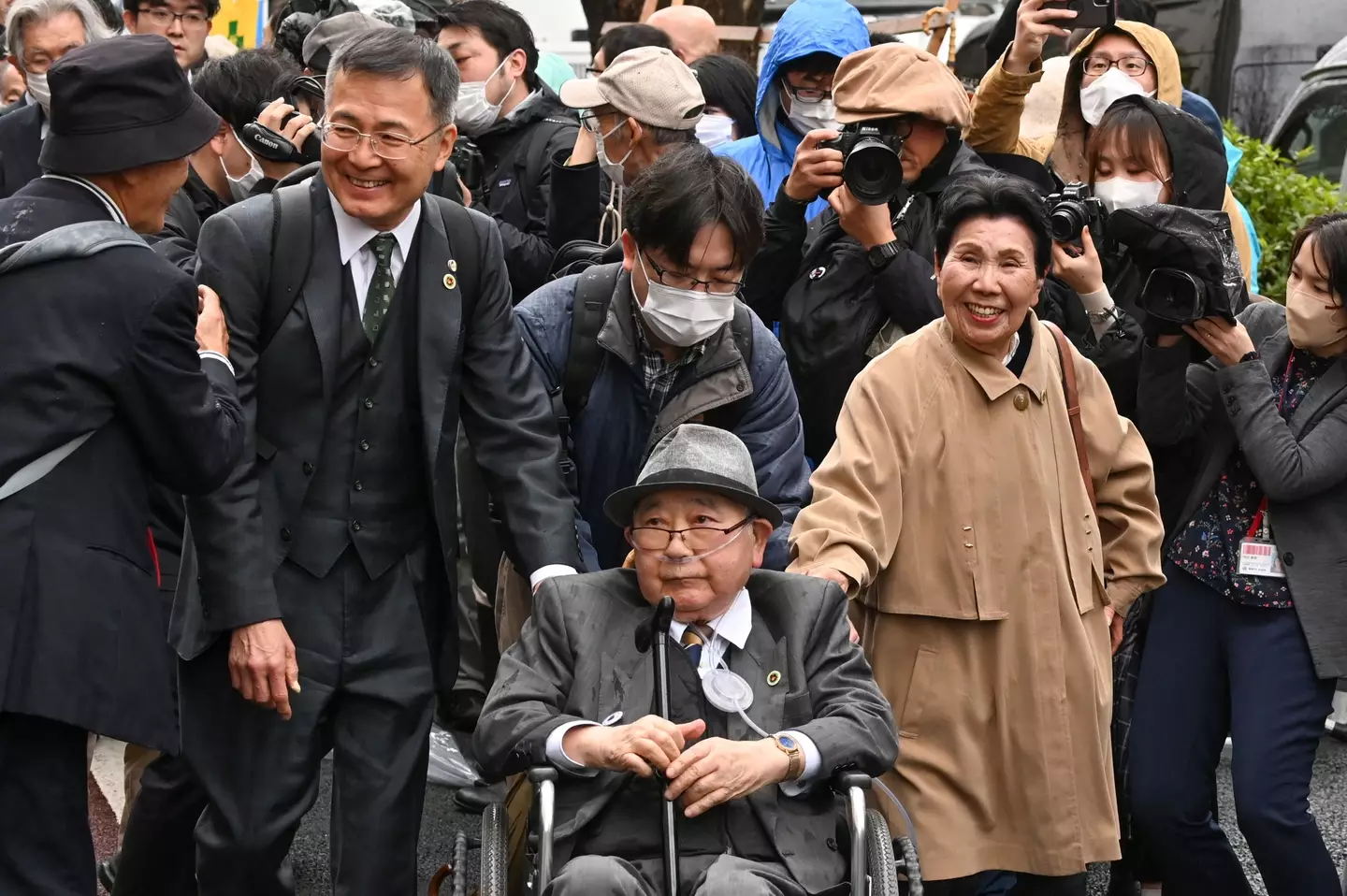 A retrial was ordered in 2023. (KAZUHIRO NOGI/AFP via Getty Images)
A retrial was ordered in 2023. (KAZUHIRO NOGI/AFP via Getty Images)
And today, Hakamanda was finally acquitted after a court found him not guilty of the 60s charges.
“The court finds the defendant innocent,” judge Koshi Kunii said.
Hideko has essentially spent half her life trying to prove her brother’s innocence as she said before today’s ruling that she was in a never-ending battle.
“It is so difficult to get a retrial started,” She told reporters in Tokyo. “Not just Iwao, but I’m sure there are other people who have been wrongly accused and crying.
“I want the criminal law revised so that retrials are more easily available.”Featured Image Credit: KAZUHIRO NOGI/AFP via Getty Images

Published 15:22 18 Sep 2024 GMT+1
People are just finding out about ‘harrowing’ death row methods in Japanese prisons
Amnesty International called Japan’s controversial death row execution method ‘cruel’
Japan has a brutal death row execution practice which has been around since the 19th century and has even been at the centre of lawsuits.
Tomohiro Kato was the last person to be executed on Japan’s death row after he was convicted of murdering seven people by driving into them or stabbing them in Tokyo’s Akihabara district in 2008.
With a further 107 inmates awaiting their fate, it’s safe to say that the country’s killing method is far from conventional.
The practice is carried out by long drop hanging, first introduced to Britain back in 1872.
After working out a person’s weight and height, only then it can be determined how far they should be dropped.
The idea is for the rope to sever the spinal cord between the C2 and C3 vertebrae, but not so much that it causes decapitation. This method causes instant brain death.
But what’s even more controversial is that the Ministry of Justice determines the execution date, often without prior warning to the prisoner or their family.
This means that – unlike in the US, for example – inmates won’t know their execution date in advance, and will only be told on the day itself.
This is apparently done to avoid emotional distress, but critics reckon it actually takes a psychological toll on inmates.
In fact, Amnesty International branded the practice as ‘cruel’, while a lawsuit filed by two inmates earlier this year seeking to put an end to the short-notice warning before execution was dismissed by a Japanese district court. Here’s what an execution chamber in Japan looks like (BBC)
Here’s what an execution chamber in Japan looks like (BBC)
Executions tend to take place in one of Japan’s seven designated detention centres. And then on the day, the inmate is taken to a chamber with a trapdoor inside.
Usually three officers are tasked with pressing the buttons simultaneously, but only one of them will actually trigger the trapdoor.
The inmate is then hanged, with the process normally taking place in complete secrecy.
Neither the media nor the general public are allowed to witness the hanging.
Taking to a Reddit feed, people are only just discovering the ‘cruel’ way Japan executes its inmates.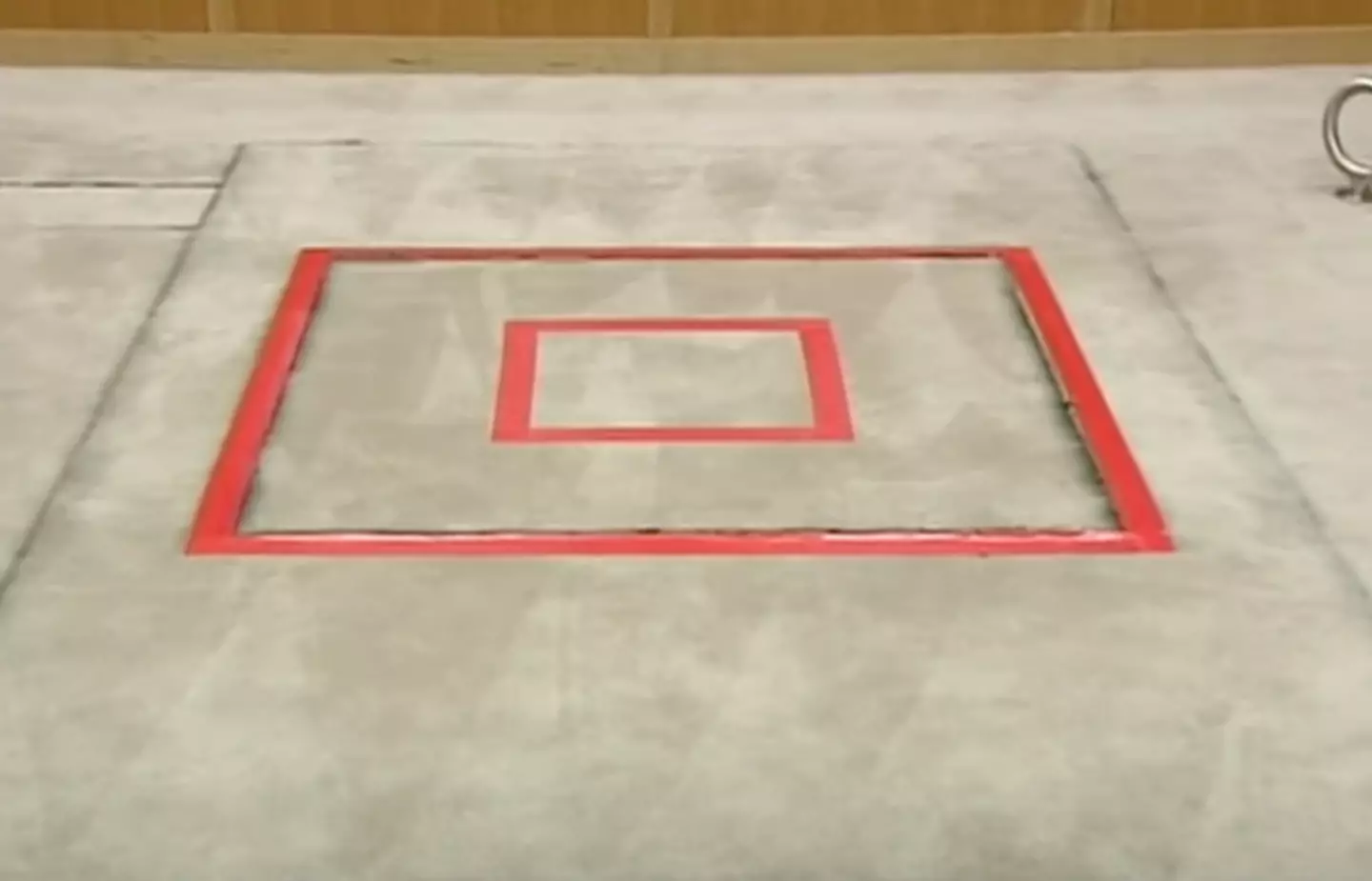 The red lines are truly terrifying (BBC)
The red lines are truly terrifying (BBC)
“Man, if we have to die can’t we at least die well rested? Imagine being woken up tired and knowing you never get to sleep again,” one person commented.
“That either means their criminal justice system is top notch. Or the exact opposite,” a second penned.
While a third wondered: “I don’t know if it’d be worse to know when you were going to be executed to count the days with impending dread, or live each day never knowing if it would be your last. Either one is terrible.”
A fourth said: “You are sentenced to f**king die, you’d rather spend months on end fearing the day approaching or being informed an hour before the deed and you don’t even get the chance to grieve all that much?”Featured Image Credit: KARYN NISHIMURA-POUPEE/AFP via Getty Images and Getty Stock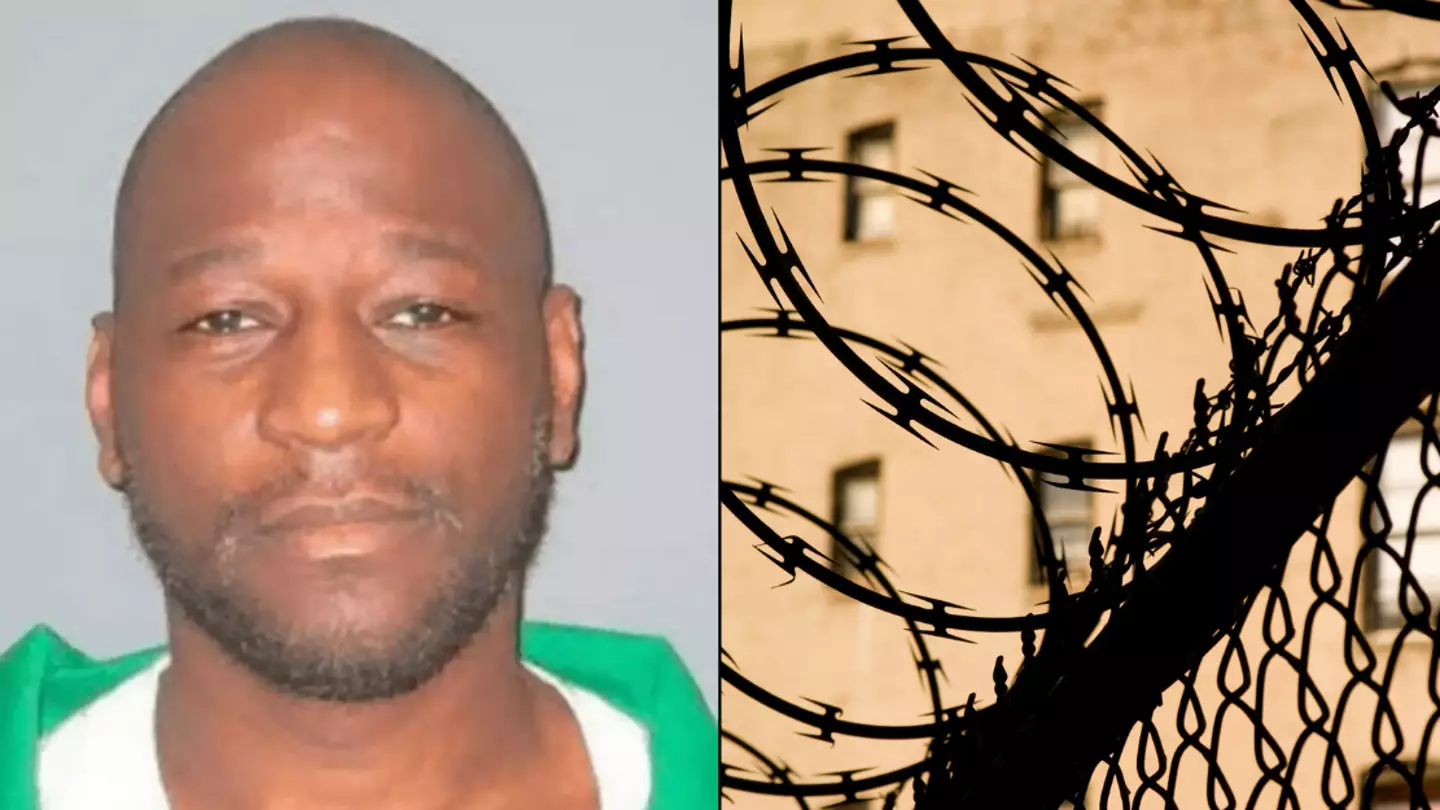
Updated 13:41 21 Sep 2024 GMT+1Published 09:59 21 Sep 2024 GMT+1
Death row inmate who wrote disturbing letters to woman he loved had chilling last word before he died
Freddie Eugene Owens became the first person put to death in the state of South Carolina in 13 years last night
A death row inmate, who wrote a series of disturbing letters to his lover from behind bars, said just one word before he was put to death by lethal injection last night.
Freddie Eugene Owens was executed on Friday (20 September) at the Broad River Correctional Institution in Columbia, South Carolina, for the 1997 murder of convenience store clerk Irene Grainger Graves.
It makes him the first inmate to face the ultimate punishment in the state after more than a decade, with the last execution taking place 13 years ago.
Owens’ last meal consisted of a well-done ribeye steak, two cheeseburgers, six chicken wings, French fries, a piece of apple pie and two strawberry sodas, a South Carolina Department of Corrections spokesperson said.
His execution – which his co-defendant tried to halt with a last minute sworn statement – began at 6:35pm local time and he was pronounced dead 20 minutes later.
Before the 46-year-old was put to death, several unsettling letters he had penned to a woman he was in love with were shared.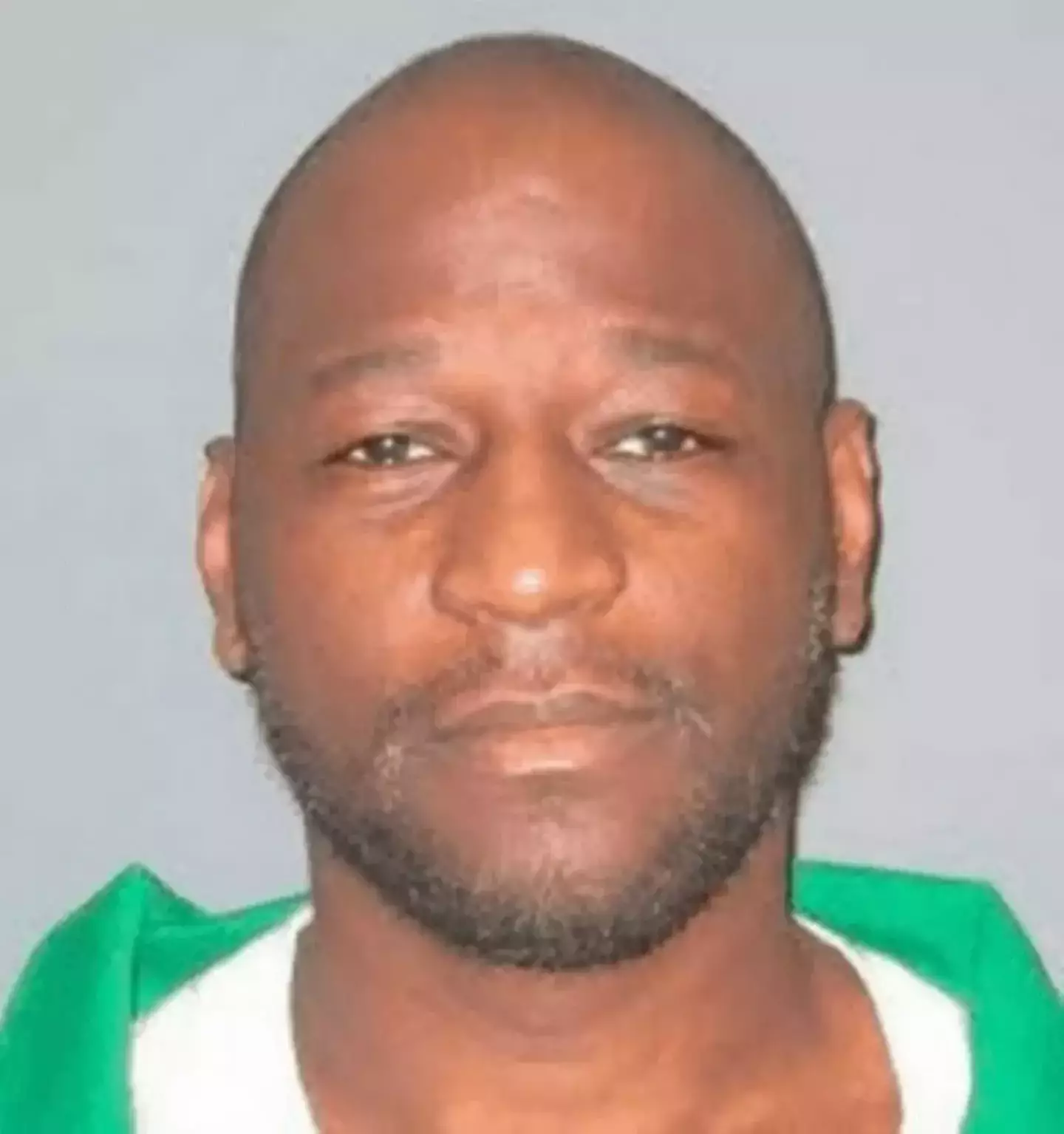 Freddie Owens, 46, was put to death on 20 September (South Carolina Department of Corrections)
Freddie Owens, 46, was put to death on 20 September (South Carolina Department of Corrections)
He is believed to have to have wrote them to his then-girlfriend in the late 90s.
The correspondence, obtained by USA Today, showed Owens telling a woman named ‘Aisha’ that ‘not a day goes by’ without him thinking of her.
In one letter sent in 1997 where he professed his love for her, he also expressed regret over his actions and voiced his anger about prosecutors who dismissed a sworn statement insisting he is innocent.
In another, Owens mood had taken a turn, as he demanded Aisha answers his questions and told her to ‘quit bull sh**ting with his emotions’.
“I hate to believe this but I heard you signed statements against me,” he wrote. “I rather you f**k my brother, leave me or kill me. When I get out, and that’s a fact, I have no words for those who betrayed me, just anger.”
A letter sent in March 1998 also read: “Aisha, you know the things I’ve done, you know what I’m capable of doing, so why do you tend to play these games with me?”
On Wednesday (18 September), Owens’ co-defendant in the robbery that resulted in Graves death signed a sworn statement which insisted that the death row inmate did not shoot the victim and was not even at the scene of the crime.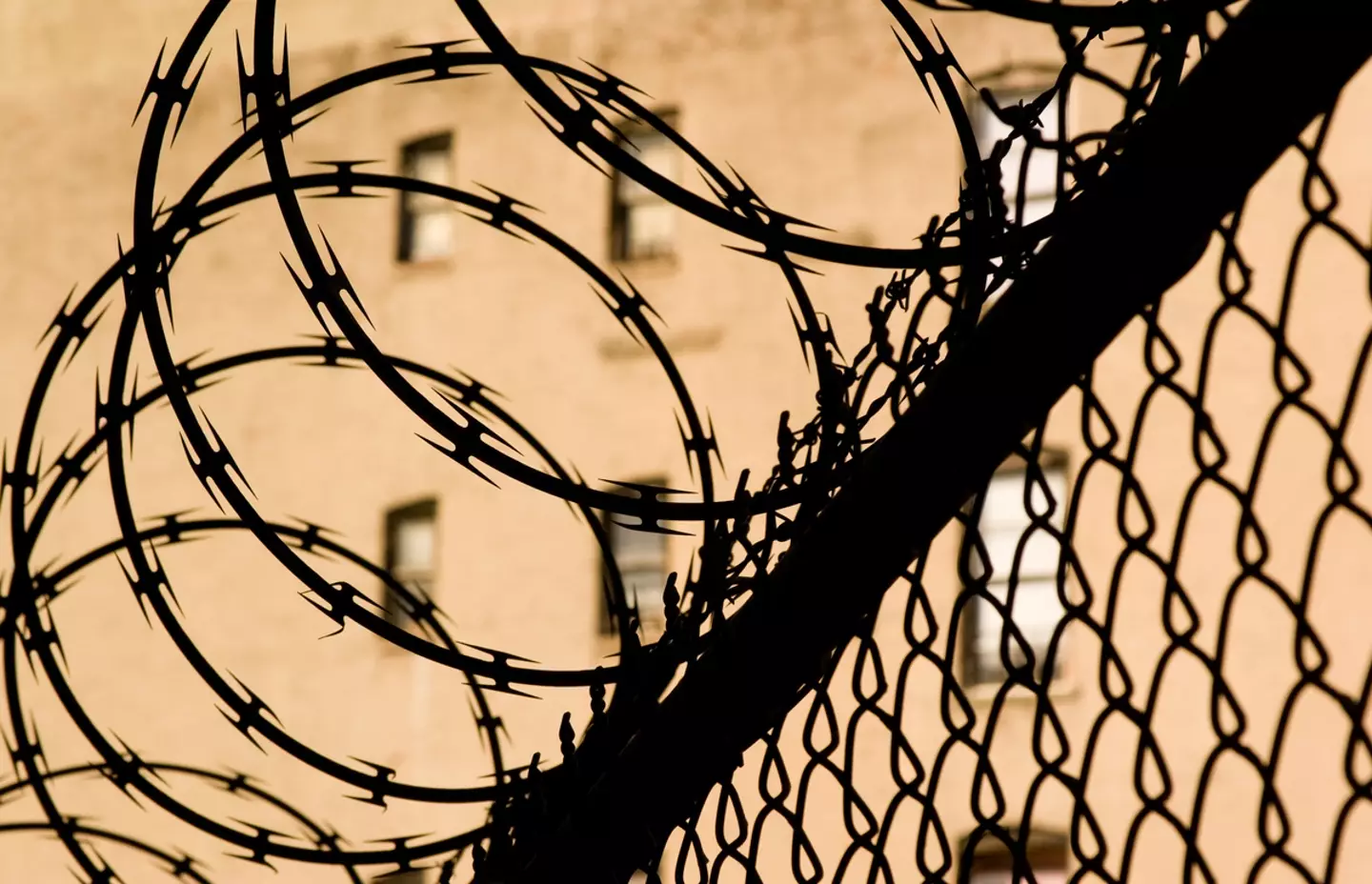 He was given the lethal injection at the Broad River Correctional Institution in South Carolina (Getty Stock Image)
He was given the lethal injection at the Broad River Correctional Institution in South Carolina (Getty Stock Image)
Steven Golden told the South Carolina Supreme Court that he was ‘scared that he would get the death penalty if he didn’t make a statement’ saying that Owens was present for the fatal incident on 1 November, 1997.
But it did not sway the court and the execution went ahead.
Graves, 41, was working an overnight shift at a convenience store in Greenville when she was shot and killed during a robbery after reportedly being unable to open the safe.
Owens was just 19 when the single mother-of-three was killed, and he was sentenced to death two years later after being convicted of murder, armed robbery and criminal conspiracy.
WHNS also reported that the man confessed to killing a cellmate in 1999, while awaiting sentencing following the conviction.
The South Carolina Supreme Court refused to halt his execution despite new pleas from people protesting Owens’ innocence, and the lethal injection was administered to him on Friday evening.
He uttered just one word before he took his last breaths, simply saying ‘bye’ after speaking to his attorney.
His attorney Gerald ‘Bo’ King described his execution as a ‘tragedy’.
“Mr. Owens’s childhood was marked by suffering on a scale that is hard to comprehend,” he told USA Today.
“He spent his adulthood in prison for a crime that he did not commit. The legal errors, hidden deals, and false evidence that made tonight possible should shame us all.”Featured Image Credit: South Carolina Department of Corrections/Getty Stock Image
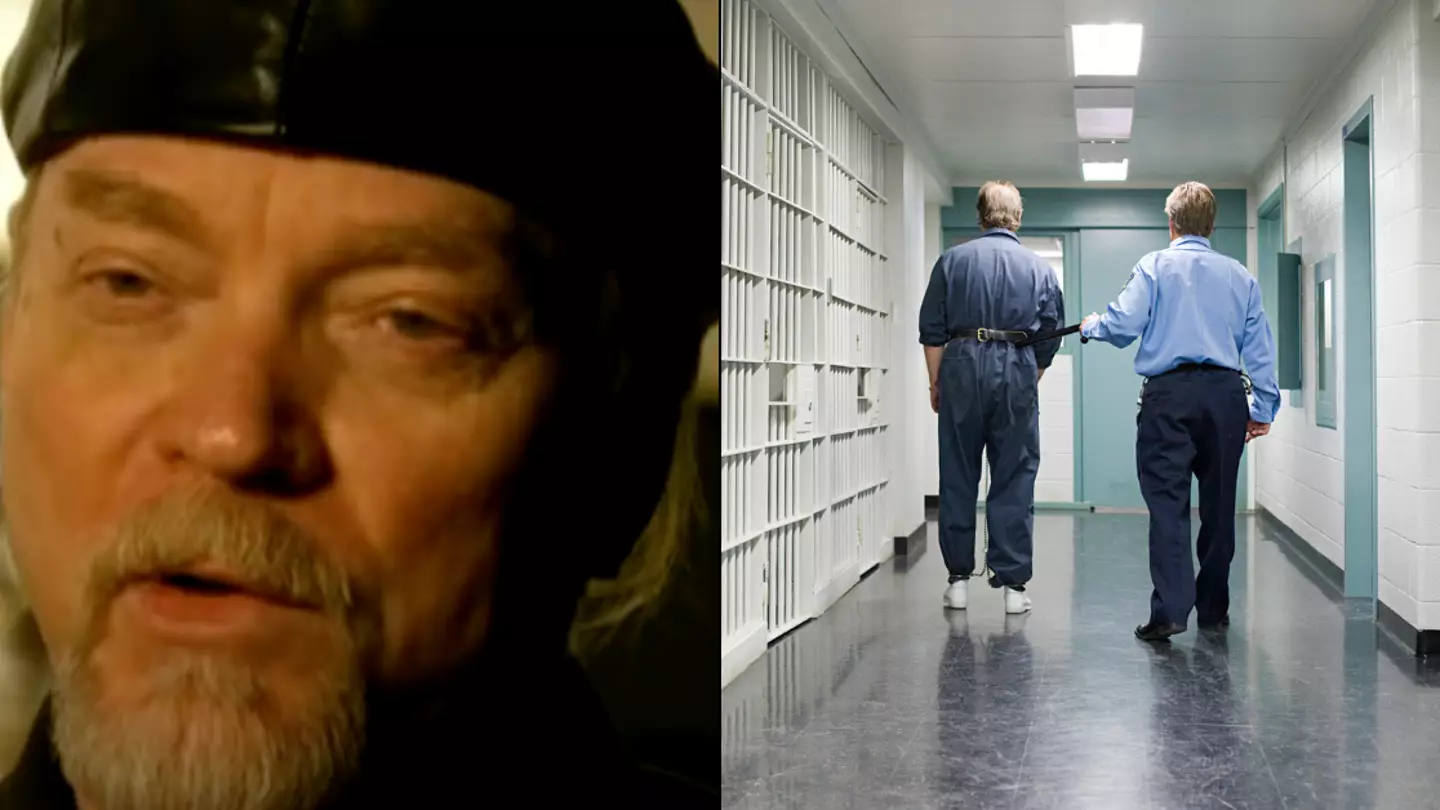
Updated 13:52 17 Sep 2024 GMT+1Published 20:37 16 Sep 2024 GMT+1
Death Row chef who cooked for hundreds of inmates refused to serve one last meal
The ‘Death Row chef’ has revealed the one convict he refused to cook for
There’s one thing those awaiting on Death Row probably look forward to and it’s their final meal – but what if you didn’t get that at all?
A chef that cooked for death row inmates facing execution at a Texas prison for over ten years, having been an inmate at Texas Huntsville Prison for 15 years himself.
Brian Price is known as the ‘Death Row chef’ and has prepared 218 final meals for those on Death Row – however, he revealed that there was one meal he refused to prepare.
In 1989, Price was sent to prison for assaulting his ex-wife and kidnapping his brother-in-law.
Upon his arrival, he was swiftly put to work into the kitchens despite his profession on the outside being that of a musician and a photographer.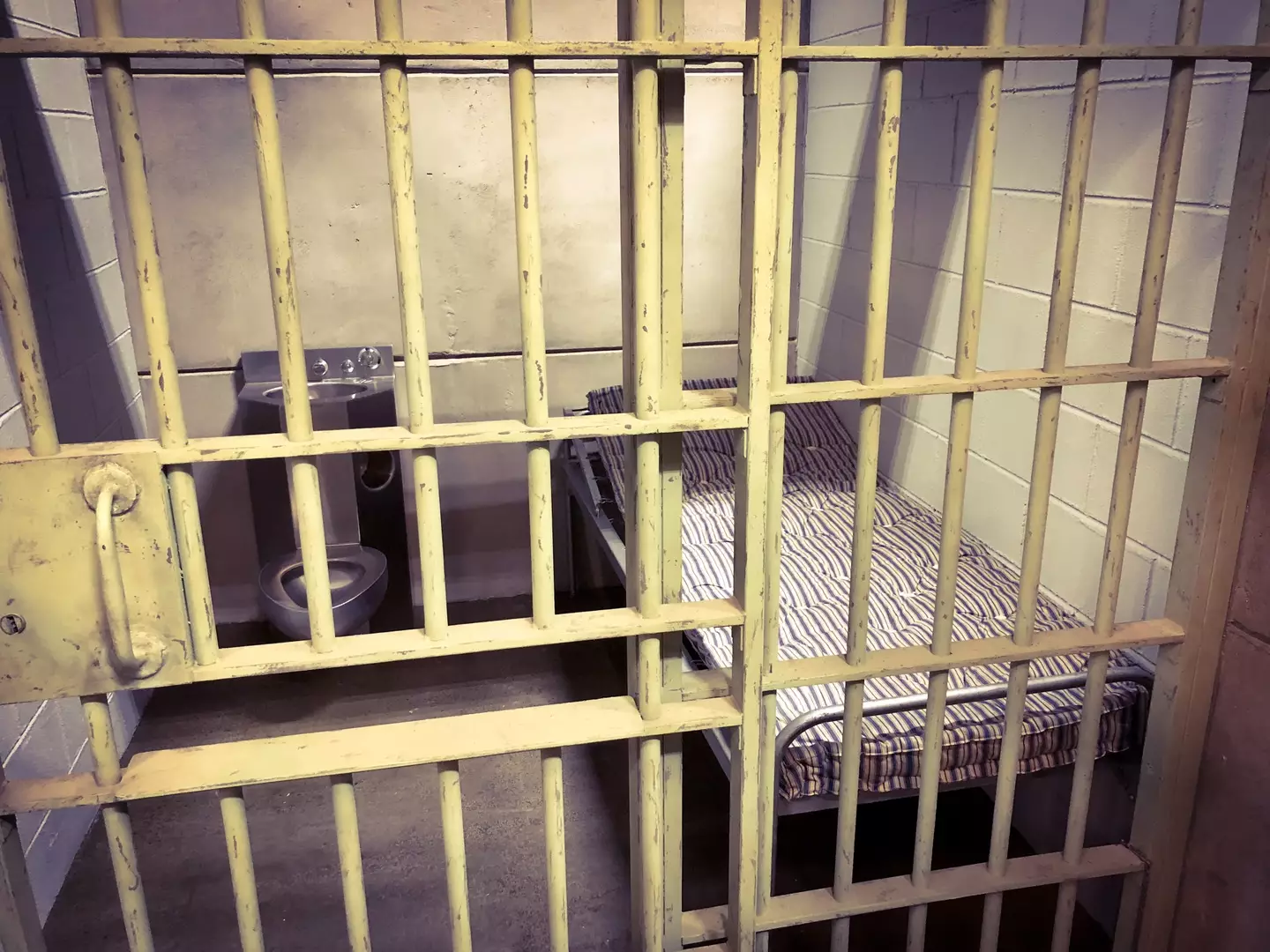 Death row inmates used to be able to request final meals in Texas (Getty Stock Photo)
Death row inmates used to be able to request final meals in Texas (Getty Stock Photo)
In several US states, inmates are allowed to request a final meal before execution, though the total cost of their request fluctuates depending on the state they are in, according to Discovery.
In Oklahoma, they can request a meal worth up to $25 (£19) while in Florida, inmates can request meals worth up to $40 (£30), though the food must be purchased locally.
The state of Louisiana even has a tradition where the prison warden joins the prisoner for their last meal.
But in Texas, the final meal was a tradition up until 2011, though Price was serving up dishes before then, also revealing that he took over from a friend when he couldn’t serve the death row inmate’s meals that day during an interview with the New York Times.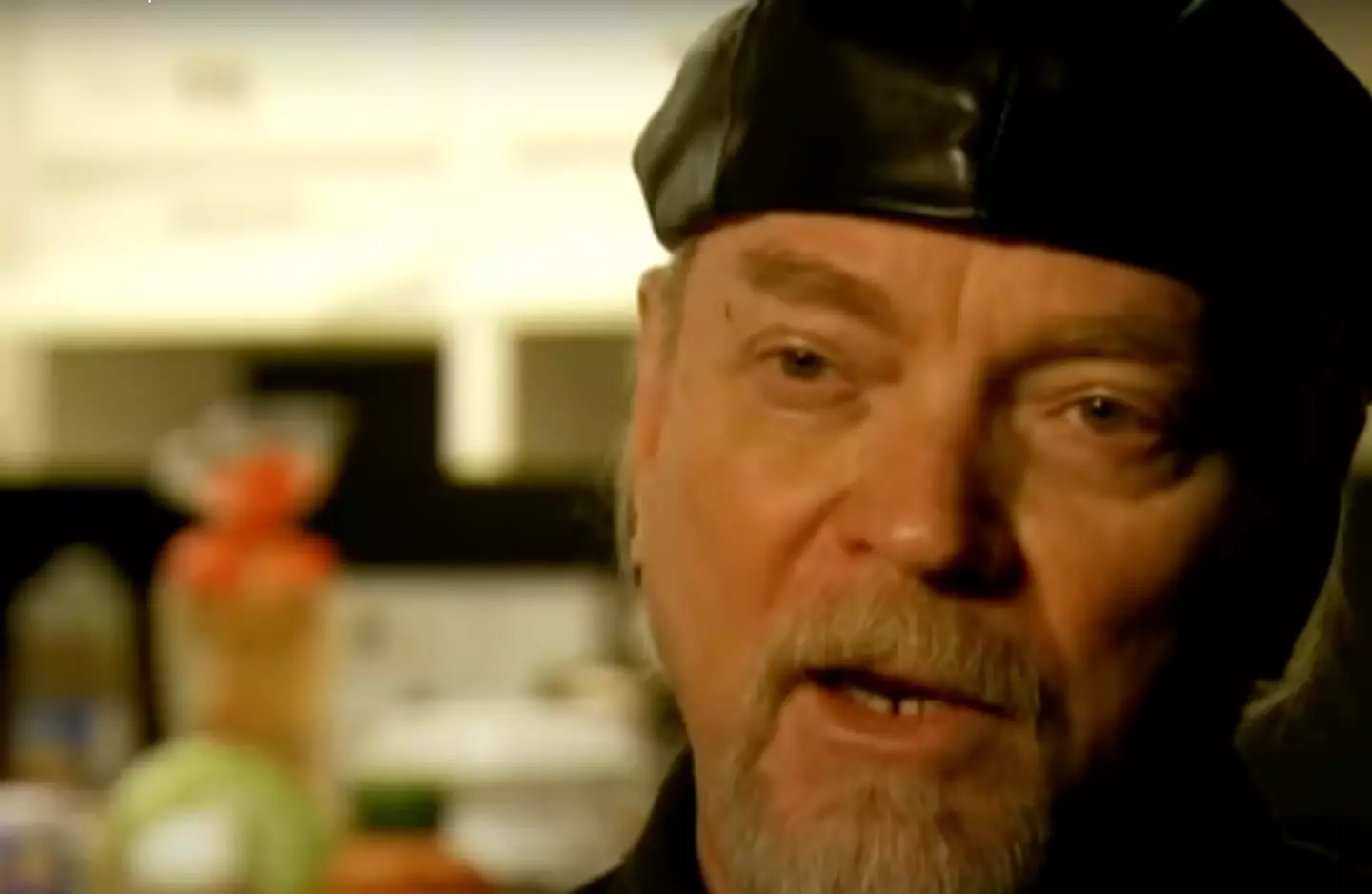 Brian Price refused to cook for one Death Row inmate (Discovery)
Brian Price refused to cook for one Death Row inmate (Discovery)
However, there was one convict that Price refused to cook for, and that was Leopoldo Narvaiz Jr, who was sentenced to death for stabbing his ex-girlfriend, her two sisters and brother to death in 1998.
According to The Daily Express US, it was because the chef had a connection to the victims – they were all friends of his daughters.
Narvaiz Jr was convicted of four counts of capital murder in 1998 and all four of his victims were aged between 11 and 19, so because of all this, Price handed the responsibility to someone else.
But that was the only person he refused to cook for, though there is little information available to the public about how their meals are prepared, or who cooks it up for them.
Price was candid in his interviews though, openly revealing to The Guardian in 2004 that he cooked for an inmate that shot a man dead in a grocery store robbery.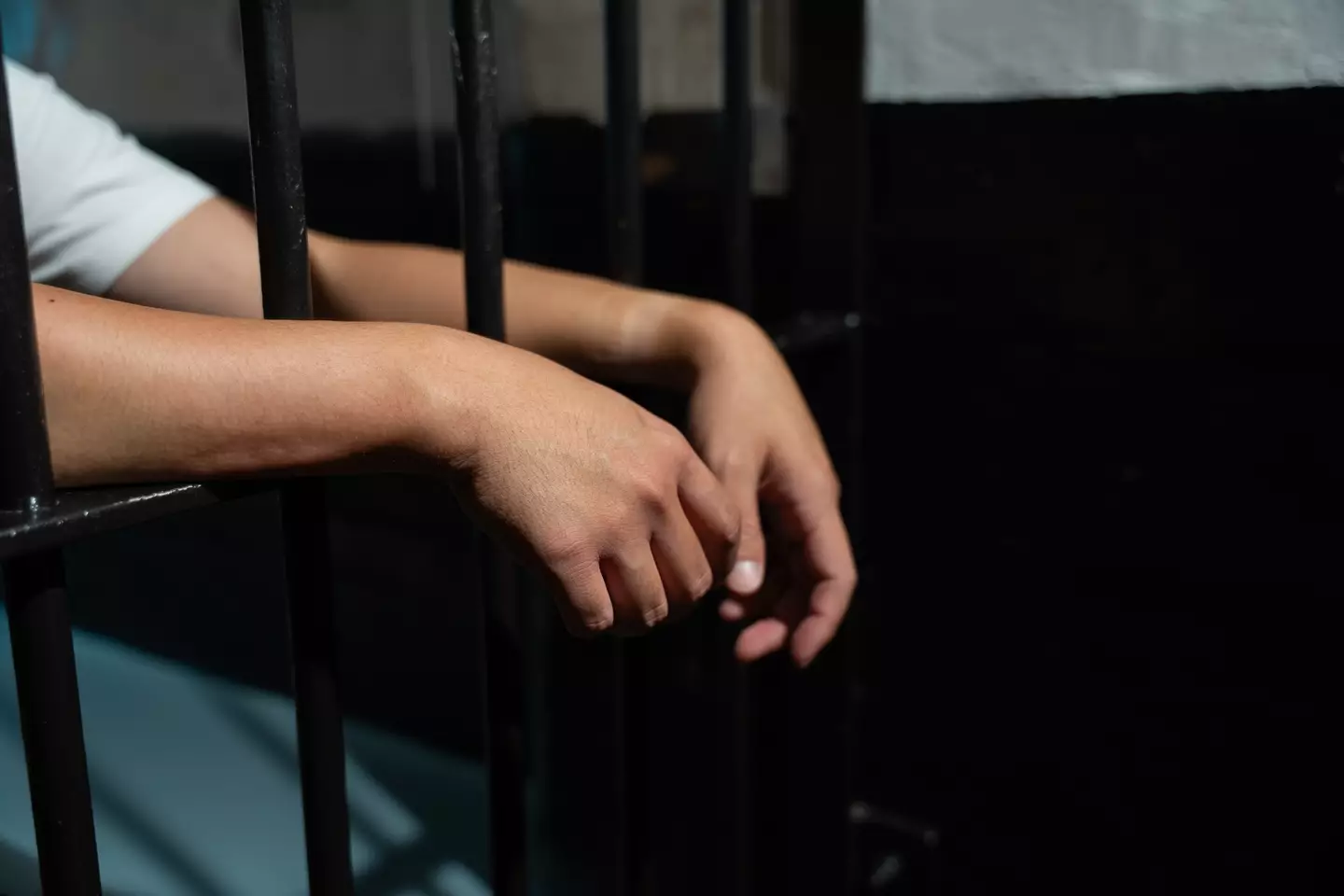 Death Row inmates in Texas have to eat whatever is on offer in the cafeteria on their final day (Getty Stock Photo)
Death Row inmates in Texas have to eat whatever is on offer in the cafeteria on their final day (Getty Stock Photo)
Though he requested ‘filet mignon’, he was only able to cook a T-bone steak.
The convict thanked him for the dish through the sergeant, to which Price admitted: “That blew me away. I went back to my cell that night, and I really reflected upon it and that was probably the last thanks that guy gave anyone before he left this world.”
But now, nobody in Texas gets to request their final meal after the actions of Lawrence Russell Brewer in 2011, when he ordered a feast, and refused to eat any of it.
Price responded to this ban, telling KSAT: “We should not get rid of the last meal. Justice is going to be served when this person is executed, but can we not show our softer side? Our compassionate side?”Featured Image Credit: Discovery / Getty Stock Photo
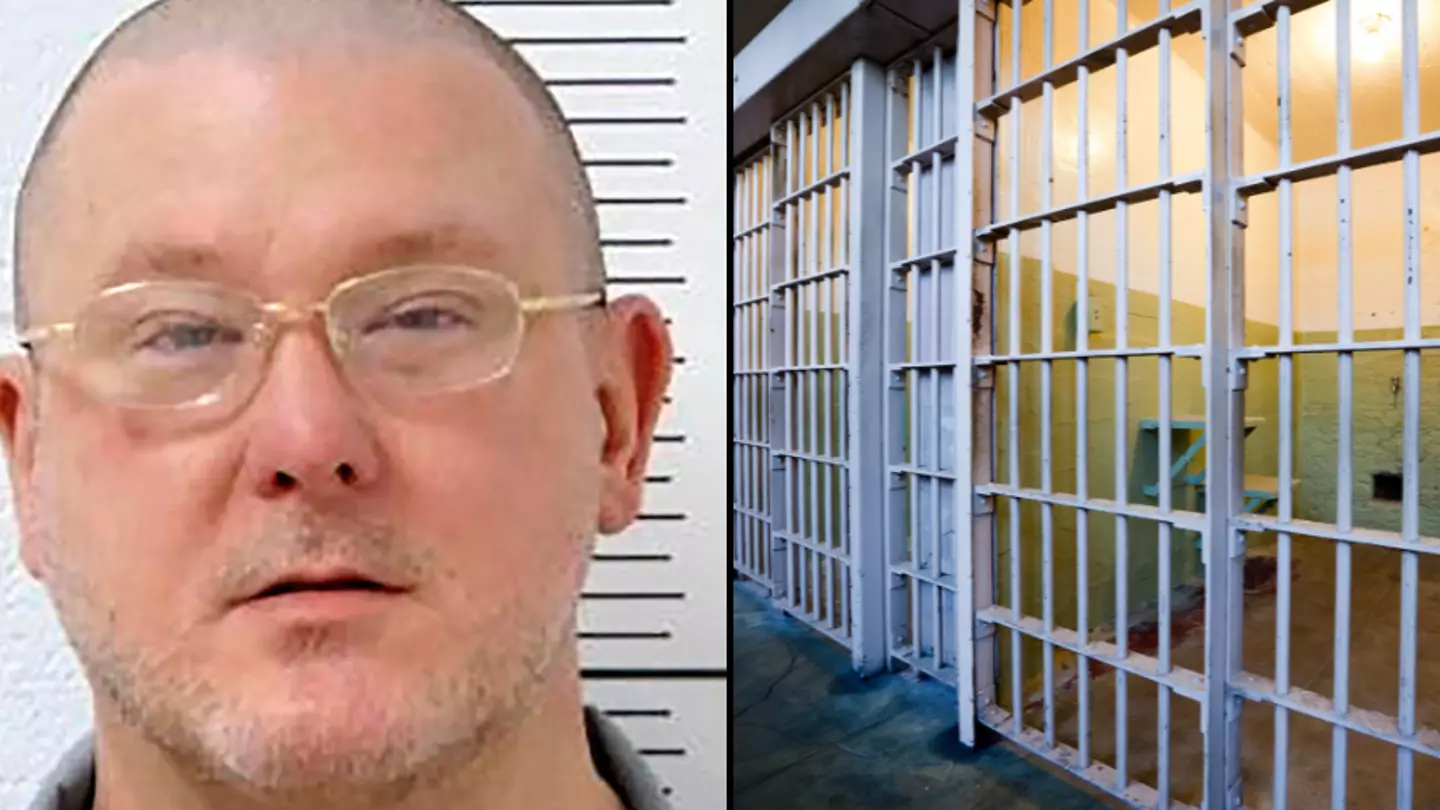
Updated 20:43 8 Apr 2024 GMT+1Published 20:42 8 Apr 2024 GMT+1
Death row inmate’s attorneys try to block execution due to ‘rare case’ in rehabilitation
Brian Dorsey’s lawyers claim he is fully rehabilitated and should not face execution
Lawyers for a death row inmate in Missouri have requested to have his execution sentence blocked, claiming he is rehabilitated.
Brian Dorsey’s execution is scheduled for tomorrow (9 April), but his lawyers have pleaded with the US supreme court the stop it from going ahead, following a petition for clemency from over 70 correctional officers.
The petition asks the court to save Brian’s life and instead hand him a life-without-parole sentence, claiming he is fully rehabilitated.
Brian, 52, was sentenced to death in 2008 after being convicted of first degree murder after shooting his cousin and her husband in their home in December 2006.
His lawyers say Brian murdered Sarah and Benjamin while experiencing psychosis induced by crack cocaine and alcohol, which he used to treat chronic depression and that he has no memory of committing the crime.
An extraordinary effort has been made to try and spare Brian’s life, with
his attorneys having argued that the system that was in place at the time of his conviction meant he was not adequately represented in the capital case.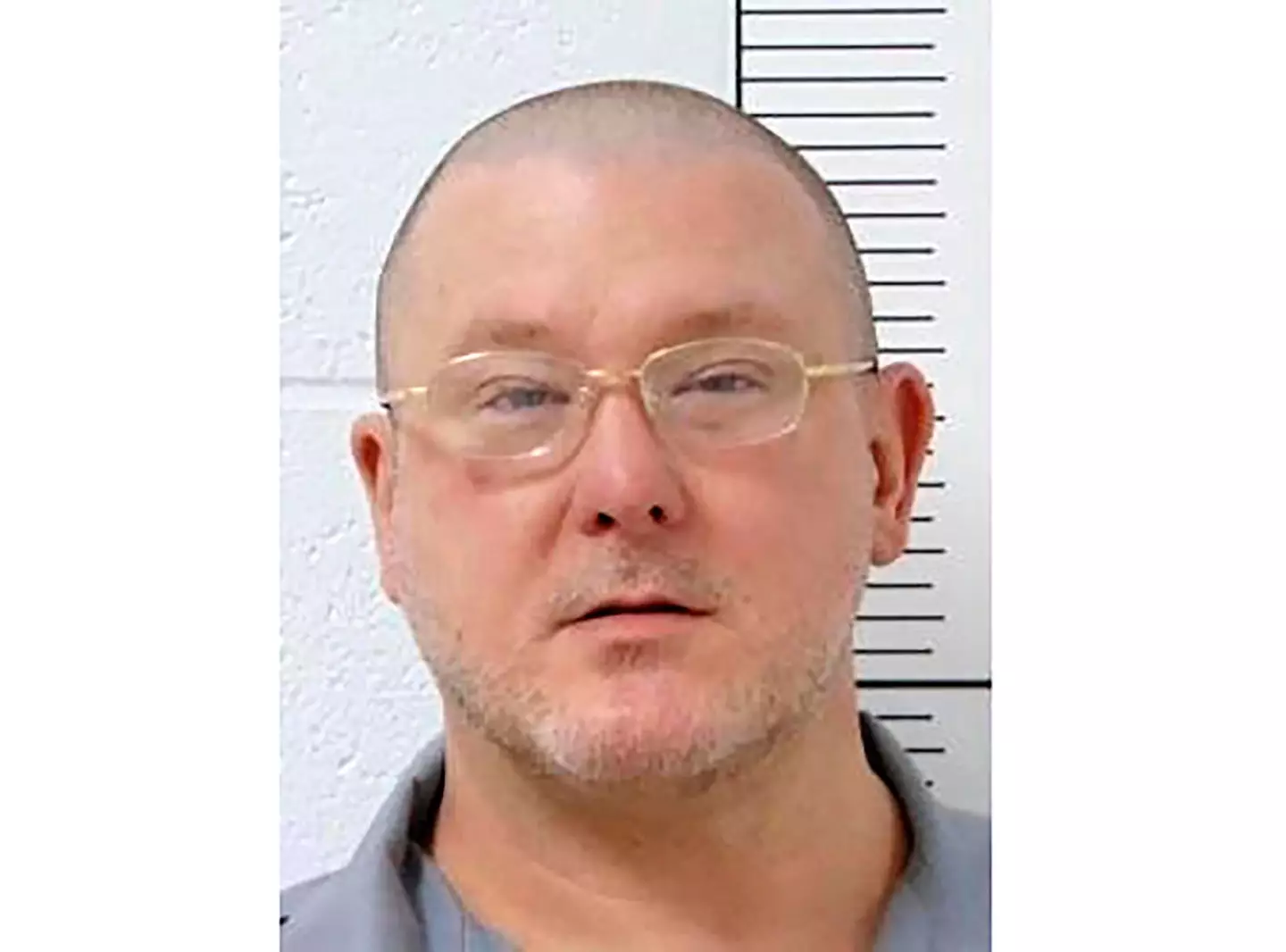 Brian Dorsey is set to be executed tomorrow. Missouri department of corrections
Brian Dorsey is set to be executed tomorrow. Missouri department of corrections
Brian’s attorneys said: “When a death-sentenced person has demonstrated that he has been rehabilitated, does the eighth amendment prohibit his execution because the penological goals of the death penalty would not be met by executing that person?”
The petition goes to explain that Brian is ‘the rare case where a person facing an imminent execution unquestionably is fully rehabilitated’, with his attorney’s arguing going ahead would violate the eighth amendment constitutional ban against punishments which serve no deterrent or rehabilitation purpose.
Retired Missouri supreme court judge Michael Wolff wrote in the Missouri Times in March that he wished he’d had more information prior to denying the prisoner’s petition back in 2009.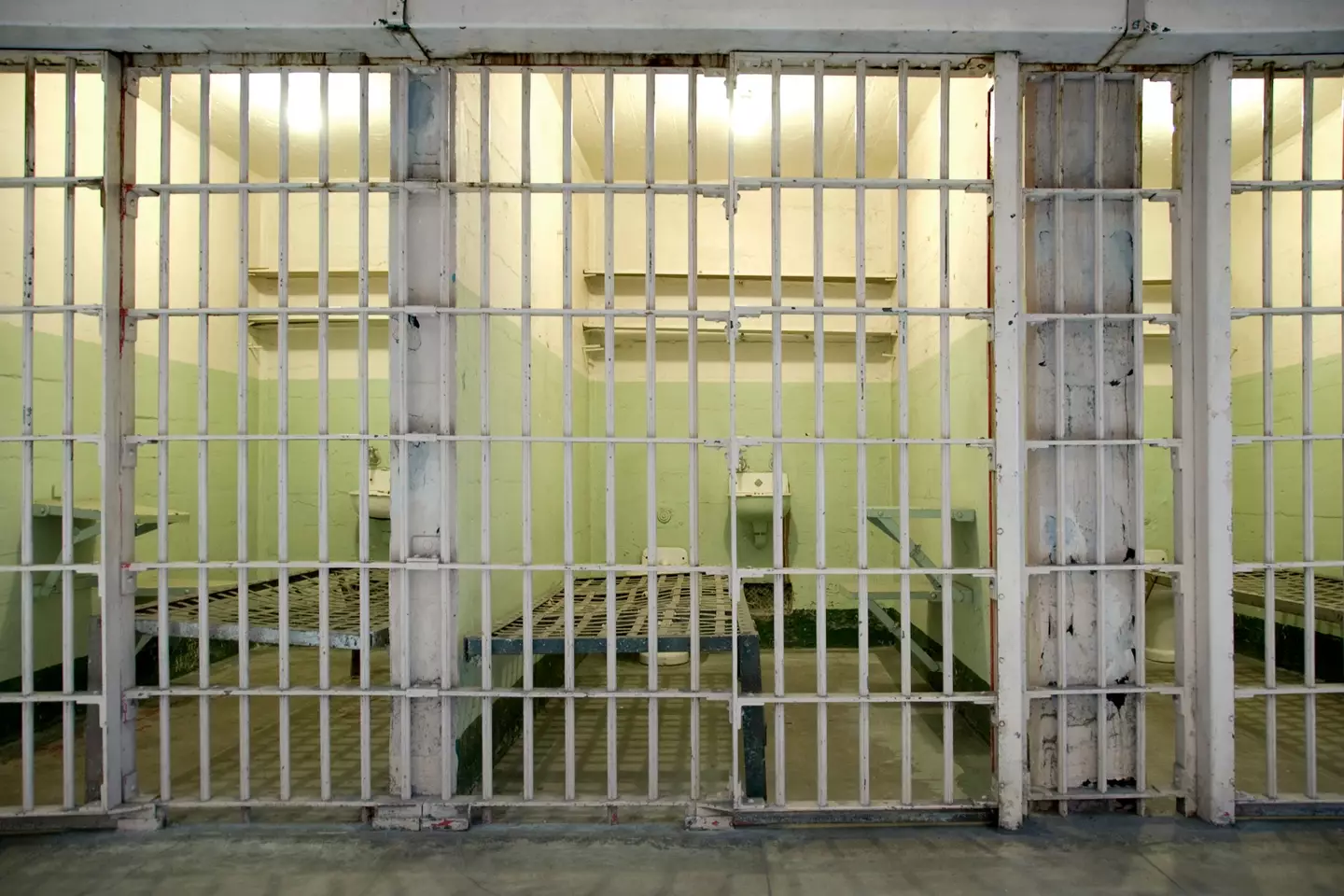 His lawyers argued he is rehabilitated. Getty stock photo
His lawyers argued he is rehabilitated. Getty stock photo
He wrote: “In the case of Brian Dorsey, I now believe this is the rare case where we got it wrong. I am so convinced of our error that I have asked Governor Parson to grant clemency to Mr Dorsey.”
A recent letter penned by Timothy Lancaster, a former officer at Potosi – the prison Brian is in – claimed that ‘executing Brian Dorsey would be a pointless cruelty’.
Missouri puts more people to death than most of the states in the US, having executed 97 people since 1976.